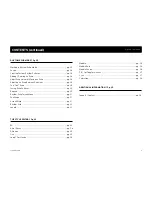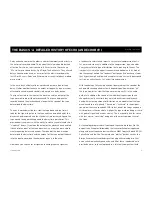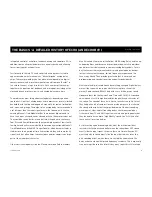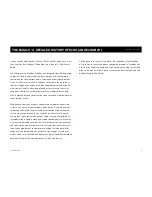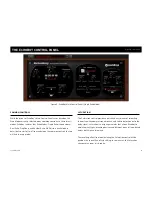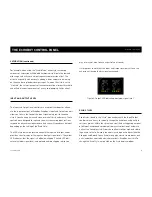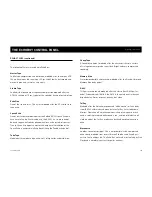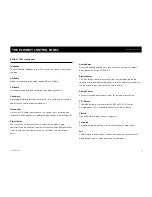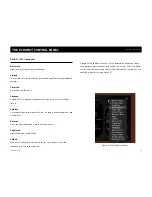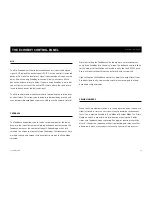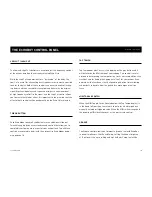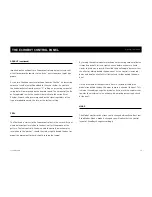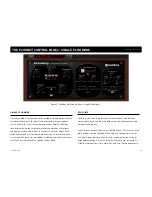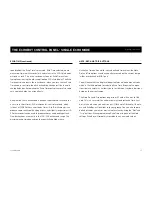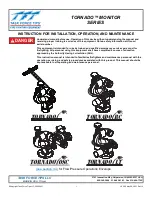
6
soundtoys.com
THE BASICS - A DETAILED HISTORY OF ECHO (AND ECHOBOY)
Echoboy — Version 5
integrated control of echo time, feedback, mixing and sometime EQ. In
addition, some units provided more than one playback head, allowing
for various types of echo patterns.
Fast forward to the late ‘70s and solid state echo devices started to
appear based on what are known as “bucket brigade” analog delay
chips. These chips would grab a tiny piece of analog audio (no digital
conversion here) and move the snippet of sound from one “bucket” in
the chip to the next at a particular rate. Put a number of these chips
together with input control, feedback, and mixing options (along with a
clock and bunch of other circuits), and analog delays were born.
The problem, or great thing about analog delays (depending on how
you look at it) was that analog delays had in most cases severely limited
bandwidth with the top end lopped off around 2k (or lower), limited low
end, noise, and grunge. The output of an analog delay for sure sounded
a lot different than the input signal even in the top end units like the
amazing Marshall Time Modulator. But these devices did not need to
have their tapes changed, heads cleaned or have their motors wear out.
They could be run on batteries and put into little pedals so that every
Tom, Dick and David Gilmour could have multiple echoes at their feet. A
few higher end units were made like the previously mentioned Marshall
Time Modulator and the MXR Flanger Doubler, which became staples in
studios for a short period of time. As mentioned, they had some funky
side effects, but often times those analog anomalies comprised a large
part of their individual character.
Other classic analog delays like the Electro-Harmonix Deluxe Memory
Man (think Andy Summers of the Police), MXR Analog Delay, and the up-
and-coming Boss and Ibanez units provided instrumentalists individual
control over their delay sound in compact analog delay pedals. To this
day there are still many manufacturers making analog delay devices
for their characteristic sound, limited frequency response and less
than crispy fidelity. They provide great echo that is warm and not
overpowering, and found all over top end guitar pedal boards.
Next came the digital revolution and everything changed. Digital delays
were all the rage with every manufacturer vying for a slice of the
market. Some sounded REALLY bad with a very brittle, grainy sound.
However others like the Lexicon Prime Time and PCM 41 / 42 sounded
amazing and are still in high demand for the quality and character of
the sound. The sound of these units was not exactly true to life. In fact
they had quite a bit of compression and pre/de-emphasis that altered
the sound of the signal but they provided some of the best sounding,
warm (again), clear, and full sounding delays that money could buy.
Other units from TC and AMS in particular were also quite popular but
they tended to have a more “high fidelity” sound. You’ll still find all of
these units all over top studios.
As for creating a good sounding delay, what the musical world has
learned is that echoes sound better when the repeat does NOT sound
exactly like the input signal. Of course there are times when you DO
want the delay to sound exactly like the input but in many cases the
best sounding effect is when there are analog-like anomalies in the
delay and echo along with limited frequency response. This is especially
true on things like vocals and to this day many top artists still use tape



